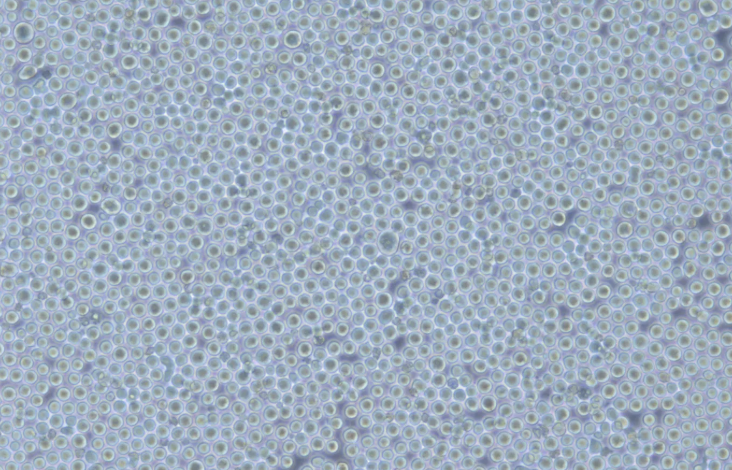Utilizing K562 Cells for Hematological Research

The intricate world of hematology, the study of blood, blood-forming organs, and blood diseases, often requires robust and reliable in vitro models to unravel complex biological mechanisms and test novel therapeutic strategies. Among the myriad of cell lines available, K562 cells have emerged as a cornerstone in hematological research, offering a unique and versatile platform for investigating a wide range of blood-related phenomena. Derived from a patient with chronic myelogenous leukemia (CML) in blast crisis, these cells possess characteristics that make them invaluable for studying cellular differentiation, gene expression, drug resistance, and the fundamental processes underlying various blood disorders.
The Unique Characteristics of K562 Cells
K562 cells are a human immortalized myelogenous leukemia cell line, distinguished by several key features that make them particularly useful for research. Firstly, they are multipotent hematopoietic progenitor cells, meaning they retain the ability to differentiate into various cell types, including erythroid, myeloid, and megakaryocytic lineages, under specific culture conditions. This plasticity allows researchers to study the differentiation pathways of blood cells and the factors that influence these processes. For instance, treatment with hemin can induce K562 cells to differentiate along the erythroid pathway, making them an excellent model for studying globin gene regulation and erythropoiesis.
Secondly, K562 cells are relatively easy to culture and maintain in vitro, growing in suspension and exhibiting a rapid proliferation rate. This ease of handling and scalability makes them ideal for high-throughput screening of potential therapeutic compounds and for large-scale production of cellular material for biochemical analysis. Their well-characterized genetic background, including the presence of the Philadelphia chromosome (BCR-ABL fusion gene), also provides a consistent and reproducible model for studying CML pathogenesis and the efficacy of tyrosine kinase inhibitors.
Applications in Leukemia and Cancer Research
One of the primary applications of K562 cells lies in the study of leukemia, particularly CML. The BCR-ABL fusion gene, a hallmark of CML, drives the uncontrolled proliferation of K562 cells. This makes them an invaluable tool for understanding the molecular mechanisms of CML and for evaluating the effectiveness of targeted therapies like imatinib. Researchers frequently use K562 cells to investigate drug resistance mechanisms, identify novel therapeutic targets, and explore combination therapies to overcome drug refractory disease. For example, studies have shown that K562 cells can develop resistance to imatinib through various mutations, providing a valuable model for understanding clinical resistance.
Beyond CML, K562 cells are also utilized in broader cancer research. Their rapid proliferation and susceptibility to various cytotoxic agents make them suitable for screening anti-cancer drugs. Researchers can compare the effects of novel compounds on K562 cells with other cancer cell lines, such as the breast cancer cell line Mcf7, to assess their selectivity and efficacy across different cancer types. This comparative analysis can provide crucial insights into the broader applicability of potential therapeutics.
Investigating Cellular Differentiation and Gene Expression
The multipotent nature of K562 cells offers a powerful platform for studying cellular differentiation and gene expression. By manipulating culture conditions or introducing specific growth factors, researchers can induce K562 cells to differentiate into different blood cell lineages. This allows for detailed investigations into the molecular pathways that govern cell fate decisions. For example, studies have used K562 cells to identify transcription factors and signaling pathways involved in erythroid differentiation, providing a deeper understanding of red blood cell production.
Furthermore, K562 cells are widely used to study gene regulation. Their amenability to genetic manipulation, including gene knockdown or overexpression, allows researchers to dissect the roles of specific genes in various cellular processes. This has been particularly useful in understanding the regulation of globin genes, as K562 cells can be induced to express embryonic and fetal globins, offering a model for studying hemoglobinopathies.
Immunological Studies and Drug Delivery
K562 cells also play a significant role in immunological research, particularly in the study of natural killer (NK) cell activity. K562 cells are highly susceptible to NK cell-mediated lysis due to their lack of MHC class I expression, making them a standard target cell for assessing NK cell cytotoxicity in vitro. This application is crucial for understanding immune responses to cancer and for developing immunotherapeutic strategies.
Moreover, K562 cells are increasingly being utilized in drug delivery research. Their suspension growth and relatively uniform cell size make them suitable for studying the uptake and efficacy of various drug delivery systems, including nanoparticles and liposomes. This can help optimize drug formulations for targeted delivery to blood cancer cells. The insights gained from K562 cells can then be extrapolated to other cancer models, including those involving Mcf7 cells, to develop more effective and less toxic therapeutic approaches.
See also: Exploring the Intersection of Dental Care and AI Innovation
Challenges and Future Directions
While K562 cells offer immense value, it’s important to acknowledge their limitations. As an immortalized cell line, they may not perfectly mimic the complexity of primary human cells or the in vivo microenvironment. Genetic drift over prolonged passaging can also alter their characteristics. Therefore, researchers often complement K562 studies with primary cell cultures, animal models, and clinical data to ensure the translational relevance of their findings.
Looking ahead, advances in gene editing technologies like CRISPR-Cas9 will further enhance the utility of K562 cells, allowing for more precise manipulation of genes and the creation of sophisticated disease models. The integration of K562 cell research with single-cell sequencing and proteomics will provide an even more comprehensive understanding of cellular processes, paving the way for novel therapeutic discoveries in hematological disorders. This continuous innovation ensures that K562 cells will remain a cornerstone in the pursuit of breakthroughs in blood-related research, complementing investigations in other cell lines like Mcf7 to provide a holistic view of cancer biology.
Conclusion
K562 cells stand as an indispensable tool in hematological research, offering a versatile and robust model for investigating leukemia, cellular differentiation, gene expression, and immunological responses. Their unique characteristics, including multipotency and ease of culture, have facilitated countless discoveries and continue to drive innovation in the development of novel therapies. By leveraging the power of K562 cells, researchers can continue to unravel the complexities of blood disorders, ultimately leading to improved diagnostics and more effective treatments for patients worldwide.




